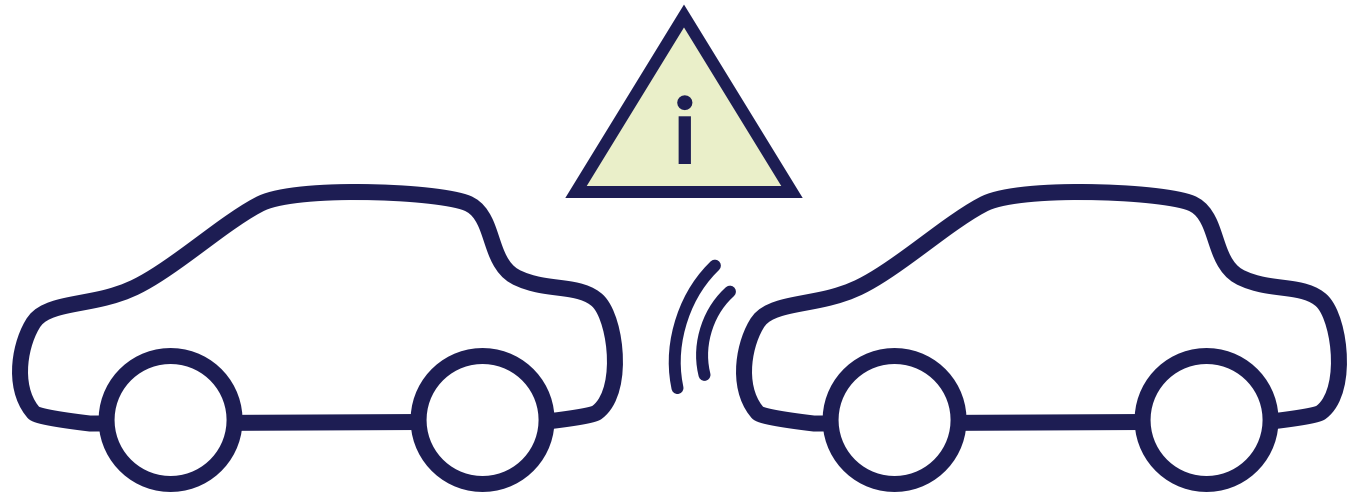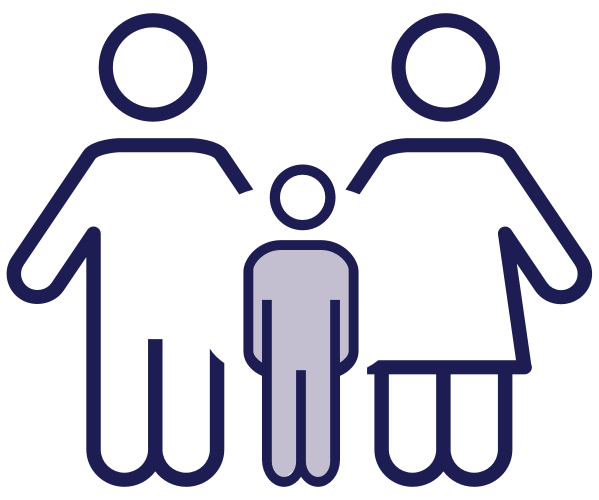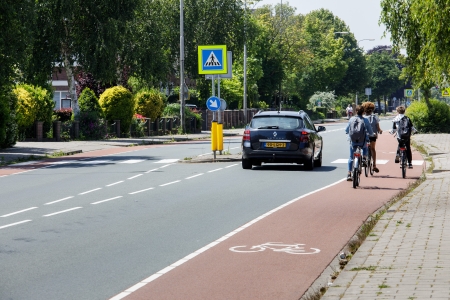Infrastructure
 Impact velocity greatly affects injury severity. That is why speed reduction at locations where and times of day when children and motorised traffic meet (in residential areas, near schools and pedestrian/bicycle crossings) is a priority. Optimising and expanding 30km/h zones, and making pedestrian/bicycle crossings safer are also important (also see SWOV fact sheets Pedestrian safety en 30km/h zones).
Impact velocity greatly affects injury severity. That is why speed reduction at locations where and times of day when children and motorised traffic meet (in residential areas, near schools and pedestrian/bicycle crossings) is a priority. Optimising and expanding 30km/h zones, and making pedestrian/bicycle crossings safer are also important (also see SWOV fact sheets Pedestrian safety en 30km/h zones).
Vehicle safety
 The use of Intelligent Speed Assistance (ISA) as a speed limiter may ensure speed reduction in certain areas where and at certain times of day when a lot of children participate in traffic. Autonomous Emergency Braking (AEB) systems with cyclist and pedestrian recognition may further improve children’s road safety [33].
The use of Intelligent Speed Assistance (ISA) as a speed limiter may ensure speed reduction in certain areas where and at certain times of day when a lot of children participate in traffic. Autonomous Emergency Braking (AEB) systems with cyclist and pedestrian recognition may further improve children’s road safety [33].
Protection measures
 Stimulating parents and caregivers to use child restraint seats correctly would improve road safety for children in cars or on bicycles. In addition, they could be stimulated to arrange for better spoke protectors to prevent injuries for bicycle passengers [16]. Also see the questions How often are children not properly restrained in cars and how dangerous is this? and How best to transport children safely?
Stimulating parents and caregivers to use child restraint seats correctly would improve road safety for children in cars or on bicycles. In addition, they could be stimulated to arrange for better spoke protectors to prevent injuries for bicycle passengers [16]. Also see the questions How often are children not properly restrained in cars and how dangerous is this? and How best to transport children safely?
Furthermore, the use of bicycle helmets by children could be stimulated (see SWOV fact sheet Bicycle helmets). Appropriate public information campaigns, targeting parents and highlighting how they act as role models could increase the use of bicycle helmets. If all children in the Netherlands wore bicycle helmets up to age 12, this could, according to a SWOV calculation, lead to an annual reduction of five road deaths and two hundred serious road injuries [17].
Education
 It is important to keep informing parents about acting as role models in traffic and to further motivate them to affect their children’s behaviour in traffic in a positive way [21] [34]. This involves that parents have proper knowledge and skills to show their children how to behave appropriately [20] [34] [35].
It is important to keep informing parents about acting as role models in traffic and to further motivate them to affect their children’s behaviour in traffic in a positive way [21] [34]. This involves that parents have proper knowledge and skills to show their children how to behave appropriately [20] [34] [35].
Apart from the development of certain (cognitive) skills, children should also gain experience. The younger they start cycling, the better their cycling skills will be at a later age [5]. Cycling skills are also linked to general motor skills [36].
